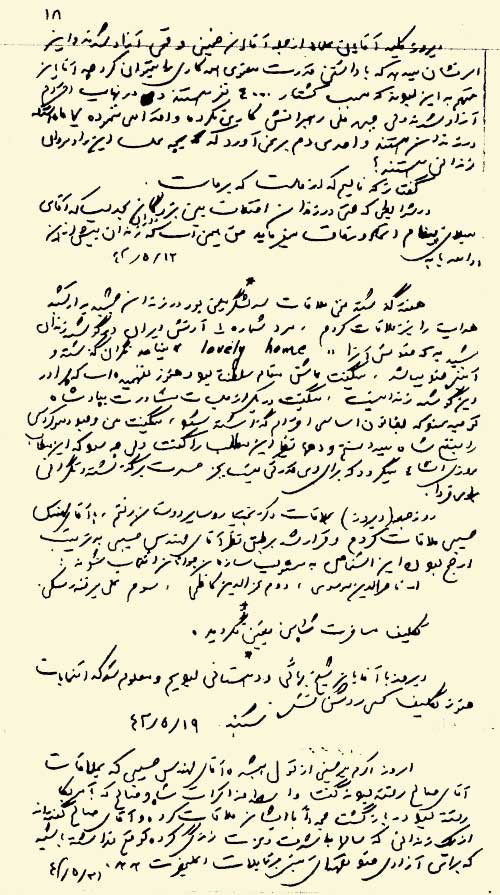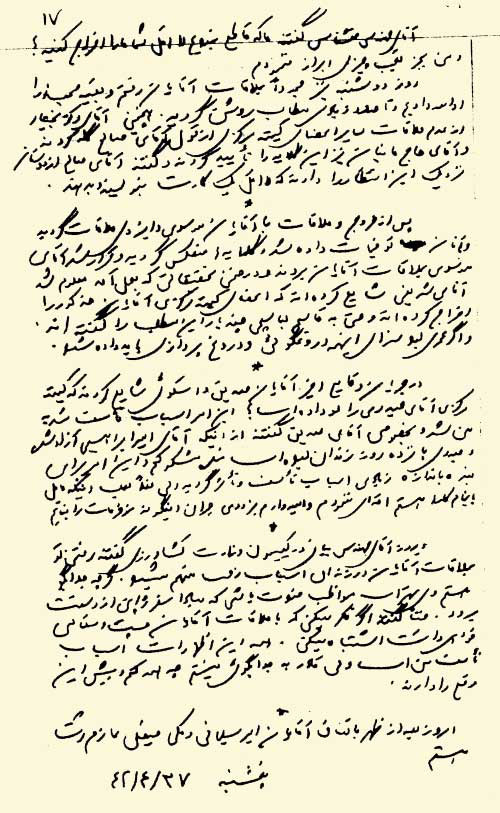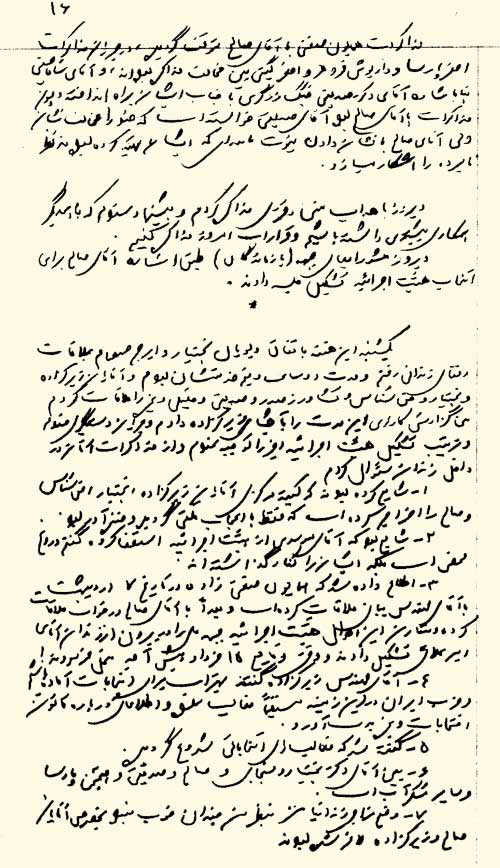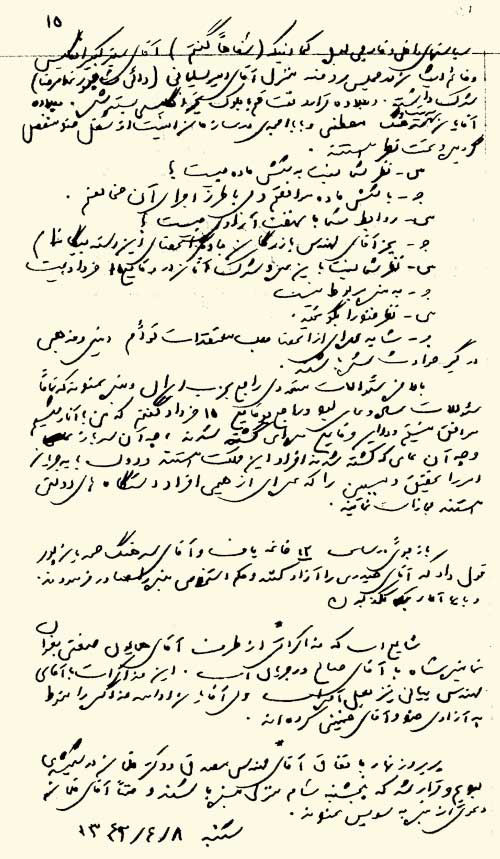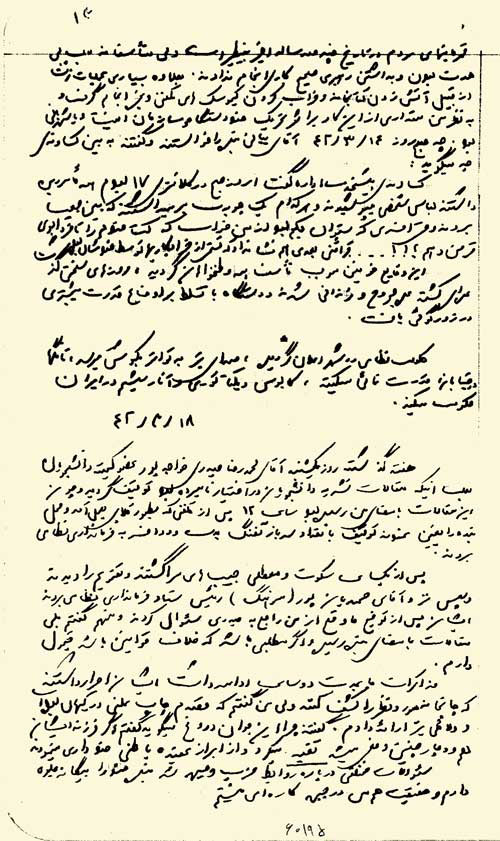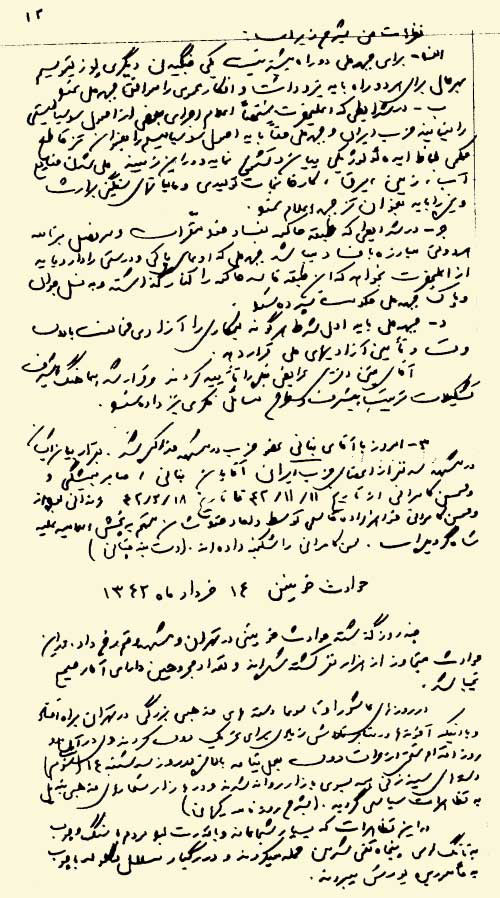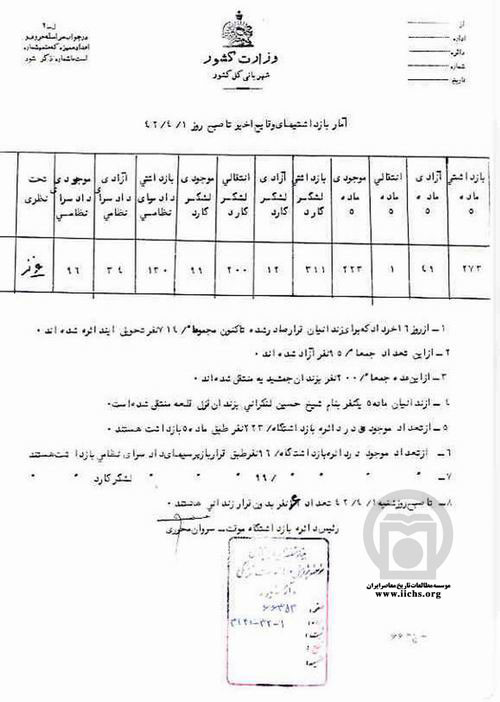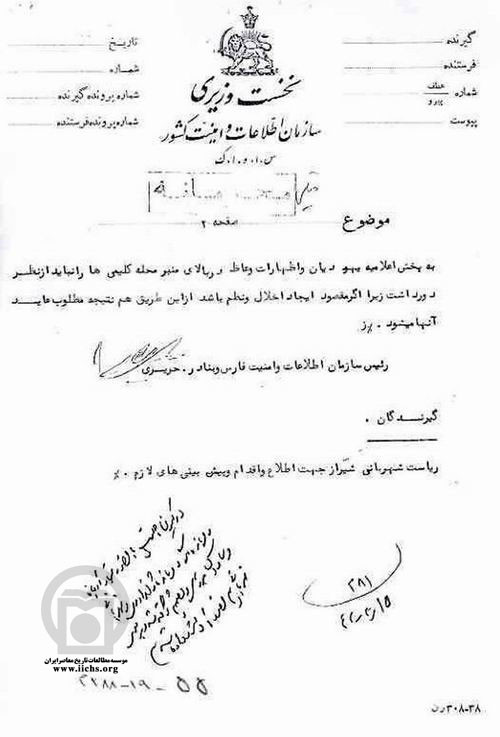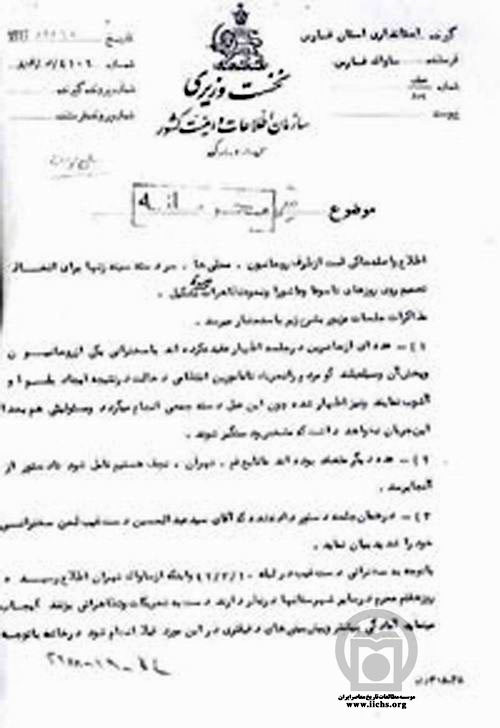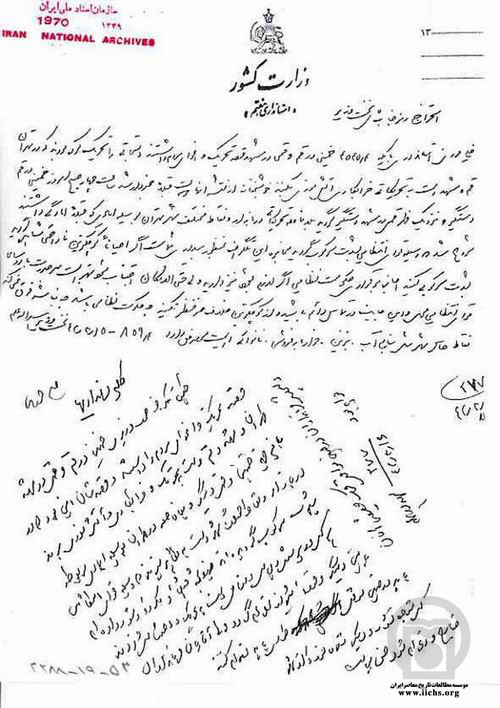Subsequent to the appointment of Assadollah Alam as prime minister in July 1962, and the efforts of the government to carry out the plans known as the White Revolution of the Shah and the Nation, scholars and clerics began a continuous struggle against the Pahlavi regime. Following a referendum held by the government and its seriously implementing the desired reforms (from February 1962), the crisis between scholars and clerics on one hand, and Assadollah Alam's administration entered a serious phase, and the attack of military and security forces to the religious school of Feizieh on 22 March 1963, ended in the hostile confrontation of the two parties, and despite the severity of the prime minister and the Shah himself, the opposition were united stronger than before against the reformist plans (so-called White Revolution) and with the beginning of Moharram (June 1342) the crisis was spread expansively.
Meanwhile, the cities of Qom and Tehran turned to be the main area of conflict between the clerics and the Pahlavi regime. Most military and security measures carried out in these two cities. With these conditions, it seemed that the socio- political atmosphere was expecting unfortunate events
As with increasing opposition of the clergy, the government also prepared itself for a hostile contact against them to the point that regardless of military preparations, they added to their verbal attacks to the clergy. Especially, the Shah and Assadollah Alam criticized the speeches and interviews of clerics for creating pungency. In 27th May, 1963, the Shah delivered a speech in Kerman and referred to various features of the clergy with the nasty phrases and compared them with thieves and plunderers and unclean animals. Ayatollah Khomeini as the leader of clerics who opposed the regime felt the existing situation left no place for compromise between them and the government, and he was sure of a confrontation between two parties. In response to the Shah's repulsive and offensive speech, he blamed the king in June 3rd, 1963 and addressed him as:
O Mr. Shah, Mr. King, I advise you. My advice to you sir. They are deceiving you sir; I do not desire that when you leave people thank God. Are Islamic clergy unclean? Are Muslim cleric unclean animals in the eyes of nation? Are telling you these unclean animal in the nation that? If they are unclean animals then why these people kiss their hands, Sir do you really mean we are unclean animals...? I hope you did not mean that the clergies are black reactionaries like unclean animals and people should avoid it. Otherwise, we will have problems. You will have problem. The clergy wish for the progress of the country. Remember this way sir, hear me, and hear from the clergy. They want the welfare of people, and of the country. We are reactionary? Are Islamic laws reactionary, black reactionary? You just made a black revolution, white revolution? What Revolution did you make, sir? Why do you seduce people? Why are you publishing lies, deception, Israel would not helpful to you. The Quran will be helpful to you.
Thus, in conditions when no space were left for any negotiation or peaceful talks, Assadollah Alam ordered for attacks to mourning rituals in the cities of Qom and Tehran. During the days 3rd and 4th June 1963 many preachers and clergies were arrested.
The news of Imam Khomeini's arrest was spread immediately around the city of Qom, and great groups of people were gathered in the streets to protest against his arrest. Thus, the well known 5th June uprising took place in Qom. Also in Tehran immediately after the news of this arrest was broadcasted, various sectors of society flooded to the streets and chanted slogans against the Shah and attacked some government centers.Thus, in revolt against the regime, Tehran joined Qom. In such circumstances, Assadollah Alam sought to the crisis only through severe suppression. Revolt was so widespread that it was felt that if the problem was not handled, the risk the collapse would threaten the regime.
In fact, from the very beginning, the sharp edge of attacks of the clergy led by Ayatollah Khomeini pointed towards Assadollah more than anyone and was considered as the main responsible for Pahlavi regime actions.
Following the arrest of these people, the protests range was expanded. Tehran University students joined the ranks of opposition to the government. June 4th, which coincided with the 11th of Muharram (AH), the protests were held in Tehran and chanted considerable slogans in favor of Ayatollah Khomeini and his position towards Assadollah Alam. The prime minister, Asadullah felt that to prevent the spread of protests to other provinces, there was one choice only one solution and that was the arrest of opposition leaders. Thus, ordered by the Prime Minister at night of June 5th, the commandos and other security forces surrounded different areas of Qom and in the morning of the next day, Ayatollah Khomeini was arrested, sent to Tehran and imprisoned in the Qasr garrison.
Thus, contrary to the Prime Minister's opinion, the process of protest and fight by the clergy and their supporters became more serious when Moharram began, and the preachers of Imam Hussein mourning ceremonies followed the ideas of their spiritual leaders to criticize Alam's administration more seriously.
iichs.ir/vdcf.ydmiw6dv07raw.html
